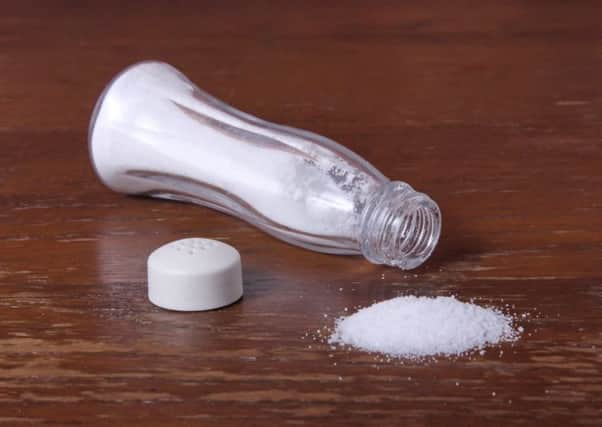Healthy tip: Slash the salt


The UK food industry has been making headway to reduce the salt content of processed foods eaten both in and out of the home. A slow and steady approach is proving to be successful in reducing the nation’s salt intake without spoiling the tastes we’ve become accustomed to.
Despite these continuing efforts statistics show that we Britons are still consuming too much salt which can lead to raised blood pressure and increase risk of heart disease and strokes. Average salt intakes remain above the recommended 6g per day for adults, that’s about a teaspoon, and lower for children.
Advertisement
Hide AdAdvertisement
Hide AdBy following Heart Research UK’s healthy tips to slash the amount of salt you use at home you could help to keep your family’s salt intake in check and re-train those taste buds while continuing to cook up delicious dishes.
Small changes that matter
- Make small and simple adjustments to your favourite recipes to reduce salt content without anyone even knowing.
- Use low salt varieties of gravy granules and stock cubes as these can be one of the biggest culprits for the salt content of home-cooked meals. Better still, make your own salt-free stock from scratch.
- Don’t add salt to your dishes or cooking water but use herbs and spices instead to give a boost of flavour.
Advertisement
Hide AdAdvertisement
Hide Ad- Don’t be tempted to cheat with packet spice mixes, marinades and dressings as these are often packed with unnecessary salt. Add punchy salt-free flavours at home using fresh ingredients like lime, chillies and herbs.
- Kick out the habit of adding salt to your food at the table by keeping the salt shaker and salty condiments like ketchup out of reach at mealtimes.
- Give children low salt dishes and snacks to prevent them developing a taste for salt. Remember that the recommended maximum salt intakes for children are much lower than for adults.
Salt-smart out and about
Whether you’re choosing foods at the supermarket or eating out in restaurants, take advantage of nutritional labelling wherever possible to help you make salt-smart choices.
Advertisement
Hide AdAdvertisement
Hide Ad- Avoid dishes which are high in salt (more than 1.5g salt per 100g) and choose low salt options instead (0.3g of salt or less per 100g) and use traffic light labelling to guide you.
- Salt or sodium? Sometimes the salt content of food is stated as ‘sodium’, which is a lower number and could cause confusion. Be wise to food labels; multiply sodium content by 2.5 to calculate the salt content in grams.
Start today and change your household’s salt habits. You may notice the difference at first but stick with it for the benefit of your heart health, and your taste buds will soon adjust to a low salt diet.